In the Faeroe islands, art, food and fashion take a cue from nature
New York Times
last updated: Sep 07,2023

Huddled in the North
Atlantic between Iceland, Scotland and Norway, the Faeroes — an 18-island
archipelago and self-governing nation within the Kingdom of Denmark —
captivates visitors the instant they land at the airport on the island of
Vágar. Silence saturates the emerald green slopes and basalt cliffs. Sheep roam
the grassy expanses that are sliced vertically by dark rocky threads caused by
the erosion of streams. It’s hard to keep your eyes focused on the road as you
behold a gauzy mist swirling around the mountains, veiling deep gorges, wide
fjords, occasional turf-roofed dwellings and waterfalls.اضافة اعلان
In this isolated land with its sparse population of some 54,400 people, the environment’s magic is pervasive — one reason, perhaps, why the Faeroes also bubble with human innovation that takes its cue from nature. And getting there is easier than ever — Atlantic Airways just started its first nonstop flights from the United States (from New York’s Stewart International Airport, about 60 miles from Manhattan).
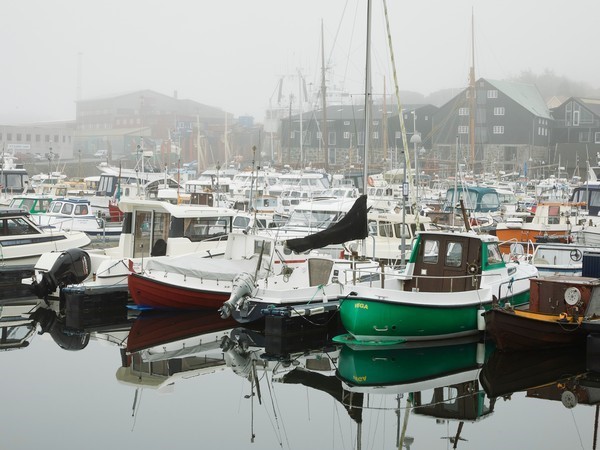
Consider the islands’ 14 miles of subsea tunnels that are currently open. The newest, at about 7 miles, takes drivers from Tórshavn, the cosmopolitan capital of the Faeroes, on the island of Streymoy (the largest island), to Eysturoy (the second largest island). Said to be the world’s first subsea tunnel with a roundabout, its unusual design features a multicolored illuminated pillar encircled by a steel installation of people holding hands, by Faeroese artist Tróndur Patursson. To augment the experience of driving through the tunnel, tune in to 97.0 FM to listen to the spellbinding soundscape created by musician Jens L. Thomsen, who said he “wanted to find the voice of the tunnel.” Another art-infused subsea tunnel is scheduled to open by Christmas, making for faster travel between Tórshavn and Sandoy, one of the southern isles.
Coastal Tórshavn — one of the world’s smallest capitals — is itself a nexus of creativity, embracing the contemporary without losing its connection to the past. The old quarter, populated by centuries-old turf-roofed houses, covers a peninsula that juts into the busy harbor. Walk the city’s winding lanes, steep alleyways and wide boulevards, and you’ll find buzzy coffee shops, wine bars and fashion emporia. Rather than just using Tórshavn as a base for island hopping, stay awhile and explore the city’s food, fashion, and art.
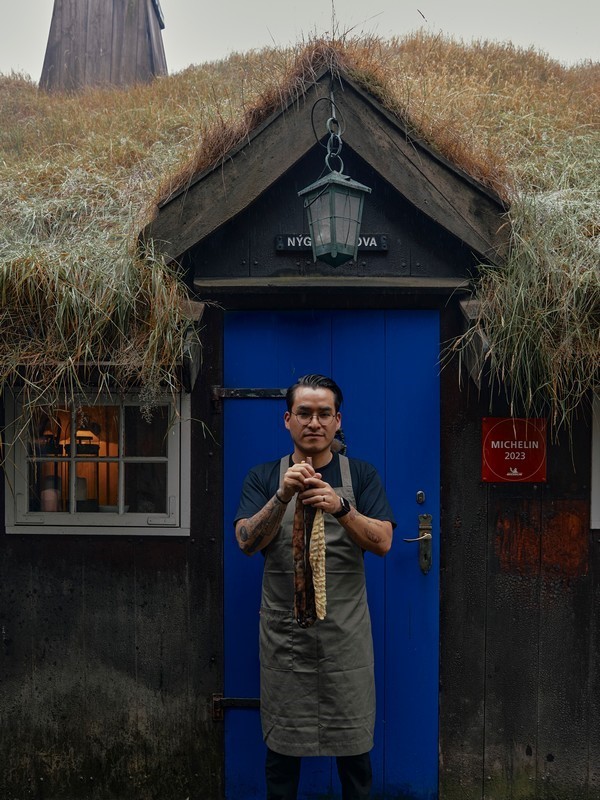
Razor clams at the restaurant ROKS in Tórshavn, Faeroe Islands.
For Food Lovers
A sense of whimsy pervades ROKS (meaning “silly”), the laid-back sister restaurant to two-Michelin-starred KOKS (temporarily decamped to Greenland but returning to Streymoy in 2025). Occupying a two-story, turf-roofed structure dating to at least the 1600s, the space is filled with amusing art, including depictions of an octopus holding glasses of red wine. The seasonal offerings, created by the head chef, Poul Andrias Ziska, showcase the Faeroes’ fish and shellfish bounty in two tasting menus (595 and 895 Danish kroner, or about $87 and $130). The razor clams, a must-try, are served raw, accompanied by a vinaigrette and shallot sauce, and sprinkled with yellow dandelion and white sweet cicely blossoms.
Across the rugged cobbled lane stands another centuries-old building, housing a different kind of restaurant. With three homey dining rooms adorned with photos of former Tórshavn residents from the late 1800s and early 1900s, Raest, which means “fermented,” honors this age-old Faeroese method for preserving food. The chef, Sebastian Jiménez, hails from Atlixco, Mexico, and puts a Mexican twist on the traditional fermented cuisine served in the 14-course tasting menu (1,400 kroner), each dish assembled like a work of art. Faeroese flatbread, for example, is fashioned into a tortilla and topped with a pan-fried langoustine, fermented carrots and pipián rojo, a mole-type sauce that Jiménez’s mother regularly cooks.

The Nordic House in Tórshavn, Faeroe Islands.
A treat for oenophiles (and art aficionados), Vingardurin (meaning “wine garden”), is where Faeroese art reviewer and critic Kinna Poulsen curates works by mostly Faeroese artists. This unpretentious wine bar and art gallery is an ideal setting for sipping wines from mainland Europe, nibbling on Iberian ham and manchego cheese, and mingling with artists at the bimonthly exhibition openings, which are held in the snug, candlelit space and, in good weather, the spacious backyard terrace. Elsa Maria Holm Olsen, a co-owner, selects the wine cellar’s more than 200 different bottles and sources ingredients such as cockles, squid, and various charcuterie from Spain, France, and Italy. There’s one nightly seating (Thursday to Saturday) for the five-course tasting menu that changes several times a year and can be paired with wine (1,300 kroner, with wine).
For the Style-Conscious
Fluffy sheep are ubiquitous in the Faeroes, as are the bulky sweaters made from their thick wool. But two shops — both on Niels Finsens gøta, a major shopping street in Tórshavn — defy expectations. Ullvoruhusid (“wool wear house”) features racks of long, stylish cardigans, sweaters, and vests, all with a minimalist silhouette — hardly what you’d expect a fisherman or farmer to wear (1,500 to 2,500 kroner). Sissal Kristiansen, a co-owner of the shop, created her Shisa Brand using predominantly undyed Faeroese wool, working in the wool’s natural shades of gray, brown, and white. Knitting since she was a child, Kristiansen mostly designs female figure-flattering apparel, some bearing side slits. It shouldn’t be at all surprising that the fog-draped landscape influences her. “The side slits were inspired by the layering in the landscape, when I looked at the mountains through the fog,” she says.
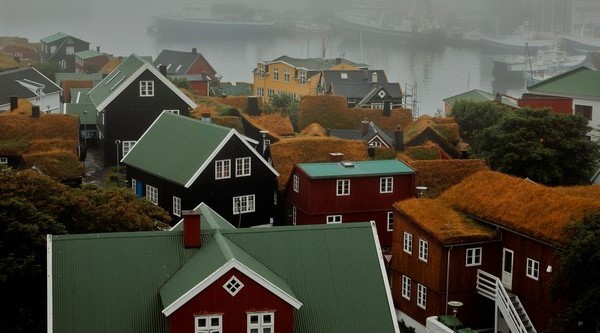
Chef Sebastian Jiménez at Raest restaurant in Tórshavn, Faeroe Islands.
At Gudrun & Gudrun, owned by Gudrun Ludvig and Gudrun Rógvadóttir, cocktail and ankle-length dresses bear spaghetti straps, plunging backs, and, sometimes, a diaphanous texture. Delicate sweaters are made with a mix of materials: one silk and one alpaca sleeve; mohair paired with glittery threads; a patchwork of different colorful wools. You can even custom order a mohair bridal gown. Ludvig constructs some of her garments by modernizing traditional Faeroese patterns, including the star that’s often emblazoned on seamen’s sweaters. She sources organic wool from all over the world, including the Faeroes. The apparel (2,025 to 4,725 kroner) is mostly hand-knit in the Faeroes, and also by women’s empowerment groups that the owners established in Peru and Jordan.
For Art Enthusiasts
A sprawling, late-19th-century cannery building fronting the harbor is home to a lithography workshop: Steinprent (meaning “stoneprint”), which has worked with Faeroese and Nordic artists over its two dozen years, relying on a printing process that dates to 1798. In the sun-flooded, second-floor space, you can watch an artist painting on the unusual beige-colored limestone, and lithographers manning the printing presses. Don’t be shy: The owner, Jan Andersson, or his 22-year-old son, Mikkjal, will be delighted to show you around. Some 2,000 original lithographs are for sale (810 to 24,818 kroner). The ground-floor gallery is worth exploring for exhibitions that range from graphic arts to mixed media, mostly from the Faeroes and the Nordic countries.
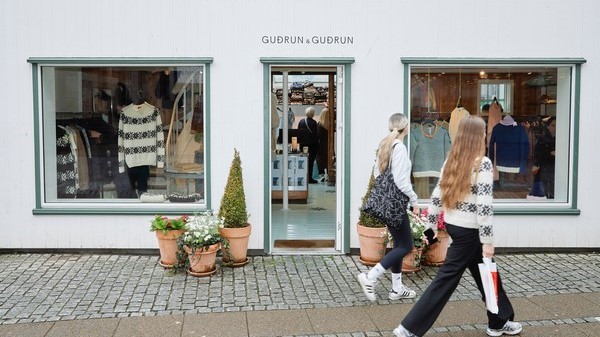
The artist Hansina Iversen at her studio in Tórshavn, Faeroe Islands.
Also along the harbor you’ll find the studio of Hansina Iversen within the ironworks shop of a shipyard building. Inside, gears and other machinery clutter the immense, shadow-laden warehouse. Yet Iversen’s space is suffused with sunlight, the white walls hung with her boldly colored and pastel-hued abstract oils and lithographs (25,000 to 90,000 kroner). An appointment is necessary but worth it. Visitors can chat with the artist about her canvases and how she takes inspiration from the Faeroes’ unpredictable weather.
You can also see her work at the National Gallery of the Faeroe Islands, which is snuggled on a grassy expanse within the trail-laced forest known as the Plantation (90 kroner for adults). The exterior of this black, turf-roofed, multi-gabled building references a Faeroese boat shed. Sun floods the modern interior, offering views of the surrounding woodland and the figurative bronzes of Hans Pauli Olsen that are displayed outside. The more than 200 works in the gallery’s permanent collection are arranged by genre (landscape, the ocean, wool and knitting) and include the dark, melancholy, 20th-century seascapes of Samuel Joensen-Mikines, one of the Faeroes’ most revered artists. Other works range from political to playful, like the “rocks” constructed of wool and embroidered with flowers and moss by Súsan í Jákupsstovu; and a giant spider-like installation by Ole Wich, representing the topography of Lítla Dímun, the smallest of the Faeroes.
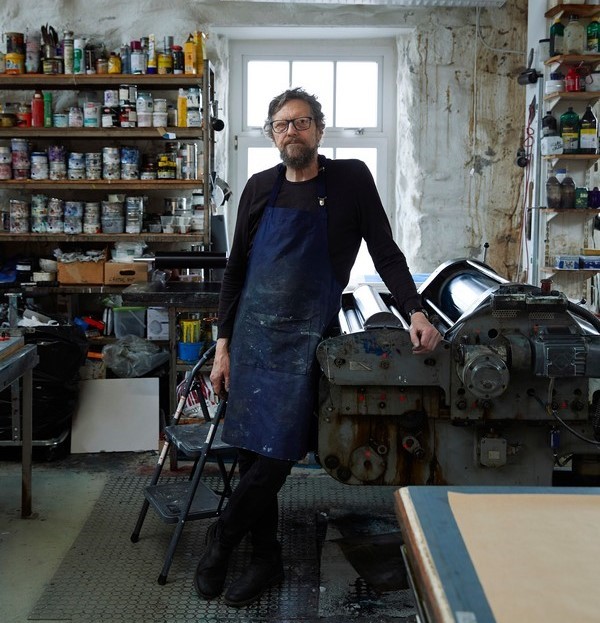
Jan Andersson, owner of Steinprent, a lithography workshop in Tórshavn, Faeroe Islands.
A short uphill walk away is a green knoll dotted with curious sculptures, including a cluster of steel sheep by Bernhard Lipsoe. Here, the Nordic House makes a statement of unity via its design and its eclectic offerings. Each of the Nordic countries contributed to this modernist structure, including Norway (granite flooring), Finland (birch furnishings), Iceland (roof construction), Denmark (glass and steel construction), Sweden (ash wood wall panels) and the Faeroes (grass roof). Faeroese and Nordic theater, music, dance, cinema, art and literature are all celebrated here. Every summer, the house also hosts an afternoon concert series, mainly classical and jazz, in the glass-walled amphitheater.
A 20-minute stroll back to the city center takes you from the architecturally grand to the petite. Leirlist (“clay art”) is the small, by-appointment-only atelier of ceramist Gudrid Poulsen. Experimenting with local ash, mud, sand and volcanic basalt in her glazes, Poulsen evokes the Faeroes in her stoneware and porcelain plates, cups and sculptures. Her latest works: rough, yet delicate, chawan cups (350 to 500 kroner), which make evocative souvenirs. And, in this land that’s peppered with memorials to men who died at sea, she’s working on a massive sculpture debuting in November on Eysturoy, honoring women who died in childbirth.

Nes vindmøllepark, where you may run into some animals cloaked in thick fog, in the Faeroe Islands.
Getting Around
The easiest way to get from Vágar Airport to Tórshavn is by either a shared taxi (about 243 kroner; prebook at auto.fo or taxi.fo), or a rental car (around 1,000 kroner per day, including basic insurance). Downtown Tórshavn is walkable, so you don’t need a car. You can also take a free bus to get around downtown and the rest of the municipality. Be aware that driving in the Faeroes involves travel along narrow, winding roads where sheep will often cross your path. Winds can be quite blustery, and fog can obscure visibility. Driving on other islands can involve transiting dark, single-lane tunnels that require you to veer into a pull-in if another car is approaching.
Read more Travel
Jordan News
In this isolated land with its sparse population of some 54,400 people, the environment’s magic is pervasive — one reason, perhaps, why the Faeroes also bubble with human innovation that takes its cue from nature. And getting there is easier than ever — Atlantic Airways just started its first nonstop flights from the United States (from New York’s Stewart International Airport, about 60 miles from Manhattan).

Consider the islands’ 14 miles of subsea tunnels that are currently open. The newest, at about 7 miles, takes drivers from Tórshavn, the cosmopolitan capital of the Faeroes, on the island of Streymoy (the largest island), to Eysturoy (the second largest island). Said to be the world’s first subsea tunnel with a roundabout, its unusual design features a multicolored illuminated pillar encircled by a steel installation of people holding hands, by Faeroese artist Tróndur Patursson. To augment the experience of driving through the tunnel, tune in to 97.0 FM to listen to the spellbinding soundscape created by musician Jens L. Thomsen, who said he “wanted to find the voice of the tunnel.” Another art-infused subsea tunnel is scheduled to open by Christmas, making for faster travel between Tórshavn and Sandoy, one of the southern isles.
Coastal Tórshavn — one of the world’s smallest capitals — is itself a nexus of creativity, embracing the contemporary without losing its connection to the past. The old quarter, populated by centuries-old turf-roofed houses, covers a peninsula that juts into the busy harbor. Walk the city’s winding lanes, steep alleyways and wide boulevards, and you’ll find buzzy coffee shops, wine bars and fashion emporia. Rather than just using Tórshavn as a base for island hopping, stay awhile and explore the city’s food, fashion, and art.

Razor clams at the restaurant ROKS in Tórshavn, Faeroe Islands.
For Food Lovers
A sense of whimsy pervades ROKS (meaning “silly”), the laid-back sister restaurant to two-Michelin-starred KOKS (temporarily decamped to Greenland but returning to Streymoy in 2025). Occupying a two-story, turf-roofed structure dating to at least the 1600s, the space is filled with amusing art, including depictions of an octopus holding glasses of red wine. The seasonal offerings, created by the head chef, Poul Andrias Ziska, showcase the Faeroes’ fish and shellfish bounty in two tasting menus (595 and 895 Danish kroner, or about $87 and $130). The razor clams, a must-try, are served raw, accompanied by a vinaigrette and shallot sauce, and sprinkled with yellow dandelion and white sweet cicely blossoms.
Across the rugged cobbled lane stands another centuries-old building, housing a different kind of restaurant. With three homey dining rooms adorned with photos of former Tórshavn residents from the late 1800s and early 1900s, Raest, which means “fermented,” honors this age-old Faeroese method for preserving food. The chef, Sebastian Jiménez, hails from Atlixco, Mexico, and puts a Mexican twist on the traditional fermented cuisine served in the 14-course tasting menu (1,400 kroner), each dish assembled like a work of art. Faeroese flatbread, for example, is fashioned into a tortilla and topped with a pan-fried langoustine, fermented carrots and pipián rojo, a mole-type sauce that Jiménez’s mother regularly cooks.

The Nordic House in Tórshavn, Faeroe Islands.
A treat for oenophiles (and art aficionados), Vingardurin (meaning “wine garden”), is where Faeroese art reviewer and critic Kinna Poulsen curates works by mostly Faeroese artists. This unpretentious wine bar and art gallery is an ideal setting for sipping wines from mainland Europe, nibbling on Iberian ham and manchego cheese, and mingling with artists at the bimonthly exhibition openings, which are held in the snug, candlelit space and, in good weather, the spacious backyard terrace. Elsa Maria Holm Olsen, a co-owner, selects the wine cellar’s more than 200 different bottles and sources ingredients such as cockles, squid, and various charcuterie from Spain, France, and Italy. There’s one nightly seating (Thursday to Saturday) for the five-course tasting menu that changes several times a year and can be paired with wine (1,300 kroner, with wine).
For the Style-Conscious
Fluffy sheep are ubiquitous in the Faeroes, as are the bulky sweaters made from their thick wool. But two shops — both on Niels Finsens gøta, a major shopping street in Tórshavn — defy expectations. Ullvoruhusid (“wool wear house”) features racks of long, stylish cardigans, sweaters, and vests, all with a minimalist silhouette — hardly what you’d expect a fisherman or farmer to wear (1,500 to 2,500 kroner). Sissal Kristiansen, a co-owner of the shop, created her Shisa Brand using predominantly undyed Faeroese wool, working in the wool’s natural shades of gray, brown, and white. Knitting since she was a child, Kristiansen mostly designs female figure-flattering apparel, some bearing side slits. It shouldn’t be at all surprising that the fog-draped landscape influences her. “The side slits were inspired by the layering in the landscape, when I looked at the mountains through the fog,” she says.

Chef Sebastian Jiménez at Raest restaurant in Tórshavn, Faeroe Islands.
At Gudrun & Gudrun, owned by Gudrun Ludvig and Gudrun Rógvadóttir, cocktail and ankle-length dresses bear spaghetti straps, plunging backs, and, sometimes, a diaphanous texture. Delicate sweaters are made with a mix of materials: one silk and one alpaca sleeve; mohair paired with glittery threads; a patchwork of different colorful wools. You can even custom order a mohair bridal gown. Ludvig constructs some of her garments by modernizing traditional Faeroese patterns, including the star that’s often emblazoned on seamen’s sweaters. She sources organic wool from all over the world, including the Faeroes. The apparel (2,025 to 4,725 kroner) is mostly hand-knit in the Faeroes, and also by women’s empowerment groups that the owners established in Peru and Jordan.
For Art Enthusiasts
A sprawling, late-19th-century cannery building fronting the harbor is home to a lithography workshop: Steinprent (meaning “stoneprint”), which has worked with Faeroese and Nordic artists over its two dozen years, relying on a printing process that dates to 1798. In the sun-flooded, second-floor space, you can watch an artist painting on the unusual beige-colored limestone, and lithographers manning the printing presses. Don’t be shy: The owner, Jan Andersson, or his 22-year-old son, Mikkjal, will be delighted to show you around. Some 2,000 original lithographs are for sale (810 to 24,818 kroner). The ground-floor gallery is worth exploring for exhibitions that range from graphic arts to mixed media, mostly from the Faeroes and the Nordic countries.

The artist Hansina Iversen at her studio in Tórshavn, Faeroe Islands.
Also along the harbor you’ll find the studio of Hansina Iversen within the ironworks shop of a shipyard building. Inside, gears and other machinery clutter the immense, shadow-laden warehouse. Yet Iversen’s space is suffused with sunlight, the white walls hung with her boldly colored and pastel-hued abstract oils and lithographs (25,000 to 90,000 kroner). An appointment is necessary but worth it. Visitors can chat with the artist about her canvases and how she takes inspiration from the Faeroes’ unpredictable weather.
You can also see her work at the National Gallery of the Faeroe Islands, which is snuggled on a grassy expanse within the trail-laced forest known as the Plantation (90 kroner for adults). The exterior of this black, turf-roofed, multi-gabled building references a Faeroese boat shed. Sun floods the modern interior, offering views of the surrounding woodland and the figurative bronzes of Hans Pauli Olsen that are displayed outside. The more than 200 works in the gallery’s permanent collection are arranged by genre (landscape, the ocean, wool and knitting) and include the dark, melancholy, 20th-century seascapes of Samuel Joensen-Mikines, one of the Faeroes’ most revered artists. Other works range from political to playful, like the “rocks” constructed of wool and embroidered with flowers and moss by Súsan í Jákupsstovu; and a giant spider-like installation by Ole Wich, representing the topography of Lítla Dímun, the smallest of the Faeroes.

Jan Andersson, owner of Steinprent, a lithography workshop in Tórshavn, Faeroe Islands.
A short uphill walk away is a green knoll dotted with curious sculptures, including a cluster of steel sheep by Bernhard Lipsoe. Here, the Nordic House makes a statement of unity via its design and its eclectic offerings. Each of the Nordic countries contributed to this modernist structure, including Norway (granite flooring), Finland (birch furnishings), Iceland (roof construction), Denmark (glass and steel construction), Sweden (ash wood wall panels) and the Faeroes (grass roof). Faeroese and Nordic theater, music, dance, cinema, art and literature are all celebrated here. Every summer, the house also hosts an afternoon concert series, mainly classical and jazz, in the glass-walled amphitheater.
A 20-minute stroll back to the city center takes you from the architecturally grand to the petite. Leirlist (“clay art”) is the small, by-appointment-only atelier of ceramist Gudrid Poulsen. Experimenting with local ash, mud, sand and volcanic basalt in her glazes, Poulsen evokes the Faeroes in her stoneware and porcelain plates, cups and sculptures. Her latest works: rough, yet delicate, chawan cups (350 to 500 kroner), which make evocative souvenirs. And, in this land that’s peppered with memorials to men who died at sea, she’s working on a massive sculpture debuting in November on Eysturoy, honoring women who died in childbirth.

Nes vindmøllepark, where you may run into some animals cloaked in thick fog, in the Faeroe Islands.
Getting Around
The easiest way to get from Vágar Airport to Tórshavn is by either a shared taxi (about 243 kroner; prebook at auto.fo or taxi.fo), or a rental car (around 1,000 kroner per day, including basic insurance). Downtown Tórshavn is walkable, so you don’t need a car. You can also take a free bus to get around downtown and the rest of the municipality. Be aware that driving in the Faeroes involves travel along narrow, winding roads where sheep will often cross your path. Winds can be quite blustery, and fog can obscure visibility. Driving on other islands can involve transiting dark, single-lane tunnels that require you to veer into a pull-in if another car is approaching.
Read more Travel
Jordan News

